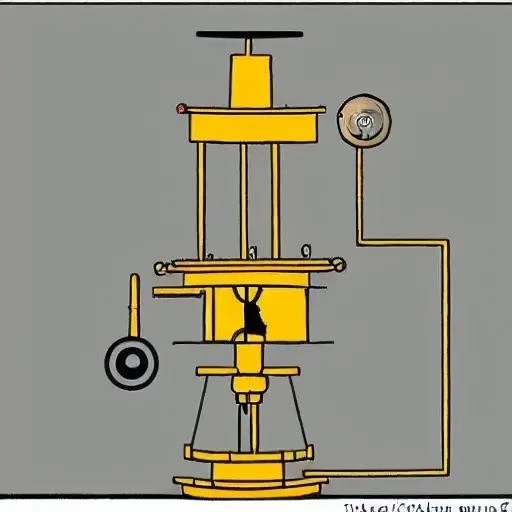For decades, the sudden illumination of that cryptic amber or red icon on your dashboard has been a universal motorist’s dread. It’s the dreaded engine warning sign—a silent, yet profoundly impactful, declaration that something within your vehicle’s complex ecosystem demands attention. Far from being a mere harbinger of doom, this light is, in fact, your car’s most sophisticated communication tool, a crucial message from its intelligent onboard diagnostics system, designed to empower you with critical information and prevent potentially catastrophic failures. Understanding its language is no longer just for mechanics; it’s a vital skill for every driver navigating the intricate roads of modern automotive technology.
Today’s vehicles, marvels of engineering, are equipped with sophisticated computer systems boasting hundreds, even thousands, of potential error codes—a far cry from the rudimentary indicators of yesteryear. A 2020 Subaru Outback, for instance, can register over 330 distinct issues, each meticulously monitored by an array of sensors constantly evaluating everything from exhaust emissions to fuel pressure. This intricate network means that while the light itself is a symptom, a signal of an underlying anomaly, it’s a remarkably precise one, guiding savvy drivers and skilled technicians toward the exact nature of the problem, transforming uncertainty into actionable intelligence and ensuring a safer, more reliable journey ahead.
Understanding Your Car’s Language: Key Engine Warning Lights
Navigating the complex world of dashboard indicators can seem daunting, but understanding the common types of engine warning lights and their implications is the first step toward proactive car care. Here’s a quick guide to help you interpret your vehicle’s essential messages:
| Warning Light Type & Color | Potential Issue Indicated | Recommended Action | Reference for More Information |
|---|---|---|---|
| Check Engine Light (Amber/Yellow) | General engine or emissions system malfunction. Could be minor (loose gas cap, O2 sensor) or more significant (catalytic converter, ignition coil). | Investigate promptly. Check gas cap. If no obvious issue, have diagnostic codes read by a professional. Safe to drive short distances with caution if steady. | Car and Driver: Check Engine Light |
| Check Engine Light (Flashing Amber/Yellow) | Serious engine misfire or severe emissions issue. Indicating active damage to critical components, especially the catalytic converter. | Stop driving immediately and safely pull over. This requires urgent professional attention to prevent severe engine damage. | AAA: Flashing Check Engine Light |
| Engine Oil Pressure Light (Red) | Critically low oil pressure, indicating a lack of lubrication or a severe oil system fault. | Stop driving immediately and safely pull over. Check oil level; if low, add oil. If light persists, do not drive; call for roadside assistance. | MotorBiscuit: Red Oil Light |
| Engine Temperature Light (Red) | Engine overheating. This can lead to severe engine damage or even catastrophic failure. | Stop driving immediately and safely pull over. Turn off the engine. Do not open the radiator cap while hot; Call for roadside assistance. | AutoZone: Engine Overheating |
| Battery/Charging System Light (Red) | Problem with the car’s charging system, possibly a failing alternator or battery. | Investigate promptly. You may have limited time before the battery dies completely. Drive directly to a service center if safe to do so. | Firestone: Battery Light On |
Decoding the Colors: Yellow vs. Red, Steady vs. Flashing
The hues and behavior of your engine warning sign are critical indicators of urgency. A steady amber or yellow light, often referred to as the Check Engine Light (CEL) or Malfunction Indicator Lamp (MIL), typically signals a non-critical issue that requires investigation soon, but doesn’t necessarily demand immediate cessation of driving. A common culprit, incredibly, is a loose gas cap, which triggers the P0455 evaporative emissions system code, easily remedied with a simple twist. However, this category also includes more complex problems like a failing oxygen sensor or a minor catalytic converter inefficiency, which, if ignored, could escalate into significant repairs or reduced fuel economy.
Conversely, a red light, or any flashing indicator, demands your immediate and unwavering attention. These vibrant alerts signify a severe, potentially dangerous problem that could lead to extensive engine damage or compromise your safety. A flashing CEL, for instance, nearly always indicates a serious engine misfire, actively harming your catalytic converter. Similarly, a red oil pressure light or an overheating engine light demands you pull over safely at the earliest possible moment, turning off the engine to prevent irreversible harm. Ignoring these critical signals is akin to playing Russian roulette with your vehicle’s most vital components, inviting costly breakdowns and potentially dangerous roadside emergencies.
The “Why” Behind the Glow: From Minor Hiccups to Major Headaches
By integrating insights from advanced diagnostic systems, we understand that the engine warning sign can illuminate for a myriad of reasons, ranging from the easily rectifiable to the mechanically profound. Beyond the ubiquitous loose gas cap, other frequent triggers include a faulty oxygen sensor, which measures unburnt oxygen in the exhaust and helps regulate fuel mixture, or a failing catalytic converter, crucial for reducing harmful emissions. Issues with spark plugs, ignition coils, or even a blocked diesel particulate filter can also cause the light to appear. Each of these components plays a pivotal role in your engine’s intricate ballet of combustion and emission control, and any disruption can throw the entire system out of sync.
Furthermore, more modern vehicles, with their increasingly complex engine architectures, might flash a warning for issues like vacuum leaks, exhaust gas recirculation (EGR) valve problems, or even transmission faults, underscoring the necessity of precise diagnostics. As industry experts frequently attest, the sheer breadth of possibilities makes accurate code reading the indispensable first step. Without this critical data, attempting a diagnosis is like searching for a needle in a haystack—an incredibly frustrating and often fruitless endeavor. Empowering drivers with this knowledge transforms them from passive recipients of alarming news into informed participants in their vehicle’s care.
The Rise of Predictive Maintenance: A Forward-Looking Approach
The future of vehicle maintenance is incredibly optimistic, propelled by the relentless march of technology. Onboard Diagnostics II (OBD-II) systems, standard in all cars since 1996, have been a game-changer, providing a standardized interface for accessing trouble codes. However, the next frontier lies in predictive maintenance, leveraging AI and machine learning to analyze vast amounts of vehicle data. Imagine a world where your car not only tells you there’s a problem but can predict a potential failure days or weeks in advance, allowing for proactive repairs before an engine warning sign even appears.
Companies are already developing telematics systems that monitor vehicle health in real-time, transmitting data to owners and service centers. This proactive approach minimizes downtime, reduces repair costs, and significantly enhances safety. As one leading automotive engineer recently remarked, “We are moving beyond reactive fixes to a paradigm of anticipatory care, where every journey is safer, and every vehicle’s lifespan is extended through intelligent foresight.” This transformative shift promises a future where the engine warning light becomes less of a surprise and more of a confirmation of an already anticipated, and often mitigated, issue.
Empowering Drivers: Your Role in Automotive Health
Understanding your car’s engine warning sign is not merely about reacting to problems; it’s about embracing a proactive mindset toward vehicle longevity and safety. When that light illuminates, the immediate best practice is to consult your owner’s manual for specific guidance. Remember, a quick check of your gas cap or fluid levels can sometimes resolve a minor issue without a trip to the mechanic. For more persistent or alarming signals, utilizing readily available OBD-II scanners (often free at auto parts stores) to read the diagnostic trouble codes (DTCs) provides invaluable information, guiding you or your trusted technician directly to the source of the problem.
Ultimately, the engine warning sign is not an adversary but a powerful ally, meticulously designed to protect your investment and ensure your well-being on the road. By actively engaging with your vehicle’s communication, staying informed about its signals, and seeking timely professional assistance when needed, you transform a potentially stressful situation into an opportunity for greater control and confidence behind the wheel. The road ahead is increasingly intelligent, and by mastering the language of your car, you’re driving into that future with optimism and unparalleled preparedness.






